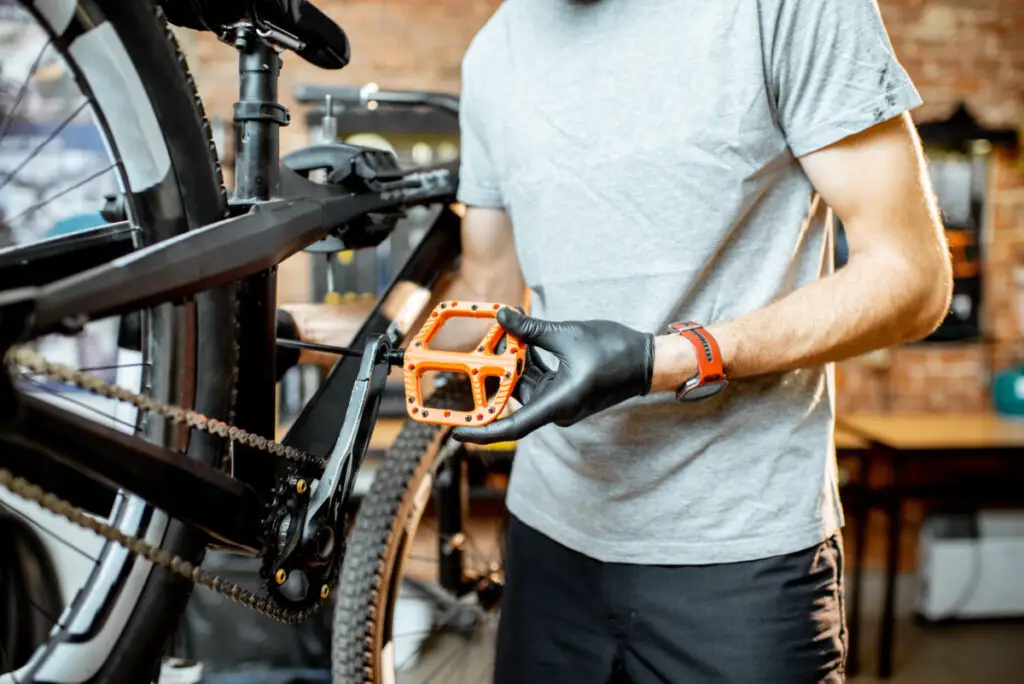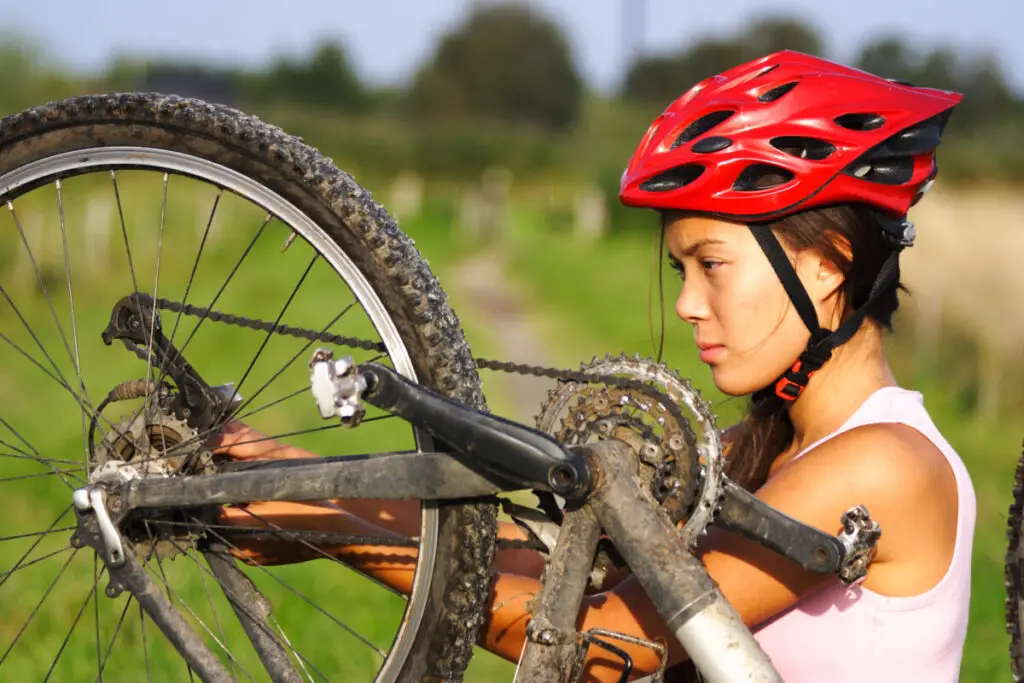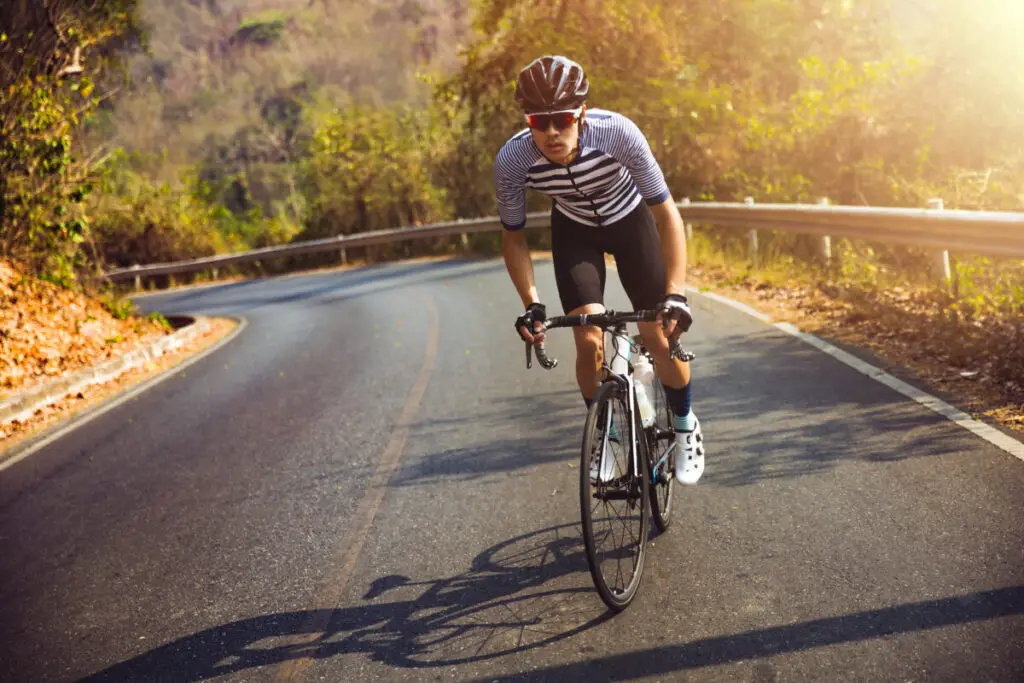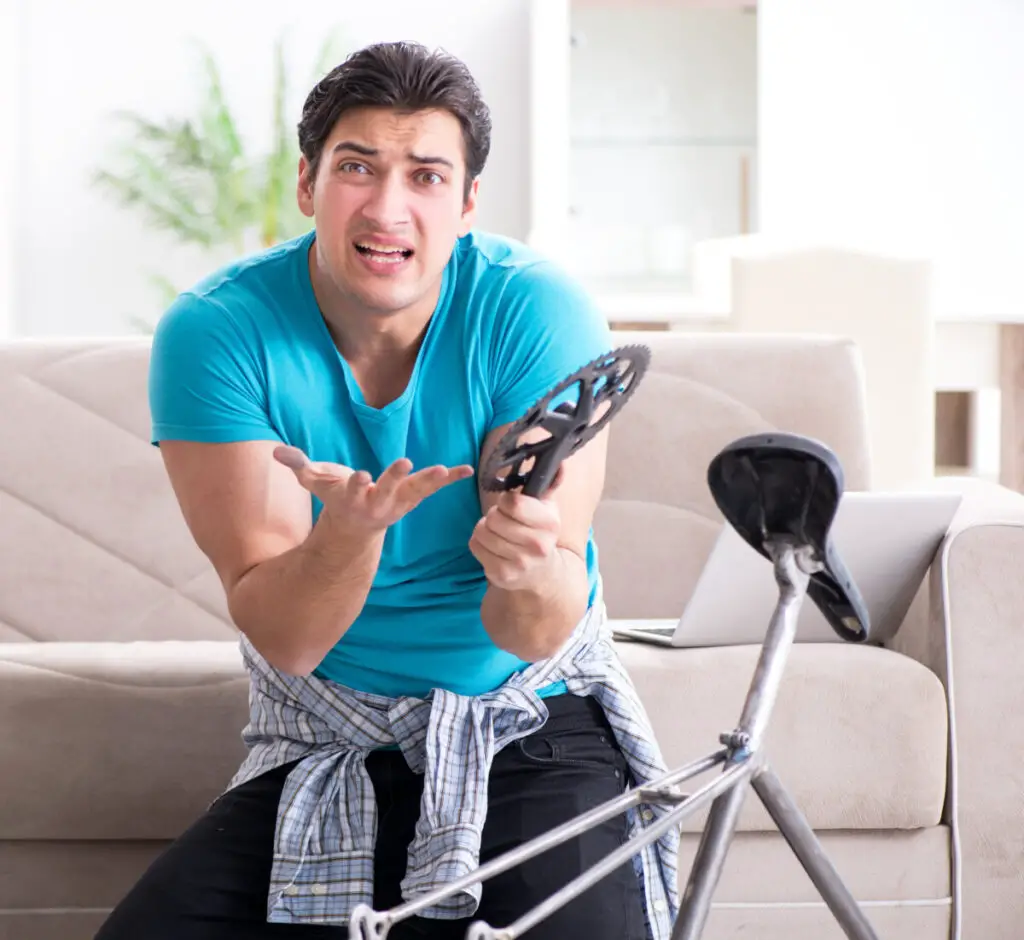Biking is a great sport that can be enjoyed by all different kinds of people, whether you’re biking around your neighborhood or competing in serious mountain biking. However, biking is made pretty difficult when the pedals and/or chains refuse to turn the way they are supposed to, and suddenly you are unable to pedal anymore. If you are currently experiencing issues of any kind with your bike, you have come to the right place.
If the pedals on a bicycle won’t turn, it likely means the pedals or cleats are too worn to function properly. Fixing this particular problem typically means needing to completely replace the pedals and or cleats. However, it could also mean that the gears simply need oiling or cleaning.
Unfortunately, stiff pedals are not the only problem that might be encountered by a bike owner, but the good news is that to every problem there is a solution. Below, you will find several tips on how to diagnose a bike’s problem as well as how to solve that problem and all the problems that might follow. Hopefully, knowing a few of these tips will put your mind at ease somewhat!
What’s the Matter With My Bike?
As mentioned before, there are a thousand possibilities as to what could be the matter with your bike. If your pedals won’t turn or the pedals turn but your wheel doesn’t turn, it’s probably safe to assume that there is something seriously wrong with your bike. Here are a few common possibilities.
First of all, as mentioned earlier, you may have old and worn-out pedals or cleats on your hands. These two things are pretty essential to you having a working bike and successful bike rides. They will require constant maintenance and, yes, replacement. You will need to clean and repair them after every few rides so they don’t break. Keep the pedals and their gears well oiled and you won’t need to call for a ride while you’re out in the middle of the trail.
You will know that your cleats need fixing or replacing when they develop extra shiny edges or even rough and jagged edges (which is most common, especially among serious cyclists). If your pedals are starting to fall apart, that is another sign that you ought to replace them as soon as possible.
You may also be facing problems with your chain or gears. When a bike is ridden often enough, the gear cables will stretch and strain somewhat. This is perfectly natural, but it does mean that your gears might have problems every once in a while. You may feel them catching or rubbing against each other every once in a while and that will most often cause problems with pedaling and shifting gears.
If you feel the gears shifting often and on their own, you will know that something is the matter. You may also find that your pedaling is requiring little to no effort. This is a likely indicator of a chain that has become loose or even fallen off completely. This is a fairly dangerous possibility, as a loose chain could snap or get caught in the wheels causing a crash.
If you find that your pedals will turn but your wheel will not turn with them, you are probably facing a hub that won’t engage or has seized up. This could be due to a lack of lubrication or even too much grease (that has hardened over time).
Solving the Problem(s)

There are probably, what sounds like, a thousand different bike issues here, but don’t worry because there are dozens of solutions as well. If you have been wondering how in the world to fix all those issues, look no further. Here are a few ways to fix the problems mentioned above!
As for cleats and pedals, the only thing you can really do is get them replaced as often as needed. If you have no pedals, there’s a good chance you’re going to have a frustrating time trying to get your bike to work well for you. Broken or old cleats will provide similar problems so replace them as often as is needful.
You should also be careful to grease/lubricate the moving parts because a stiff pedal could very well just be the result of too much buildup keeping it from turning. Clean the pedal gears thoroughly and grease them if you need to. This should make it a tad easier to pedal and move the bike around in general.
If the problem lies with your chain, you could be facing one or more things. Either the chain has loosened and fallen off track, gotten caught in the shifter, or snapped completely. If the chain has snapped, you will need to probably just take it to a bike shop to get it replaced or repaired. If it has fallen off or become loose, you can tighten it yourself (as long as you have the know-how).
If the hub is where the problem lies, you will be best off taking your bike apart and giving it a good, thorough cleaning. The most common reasons for it seizing up is because there is old and hardened grease gumming it up or an equally old buildup of dirt and grime. Cleaning it is easily the best way for you to solve the problem.
You can do this with a dry, bristled brush or carefully with a clean rag (though a brush is recommended to push and scrape away any excess dirt). If you want to be extra thorough (and if your bike has a more complicated hub and body) you may want to consider taking it apart and giving it a thorough scrub.
Using a degreaser such as WD-40, spray the hub to get all the dried and stale grease off the hub. The only thing about doing this is you’ll have to lubricate the hub again to keep it working right. This can get to be a tedious process after a while, but you’ll hopefully find the work to be worth it in the end.
If you have tried your best and nothing seems to be working, you can always just take the bike to an experienced friend or a bike repair shop. This will definitely be the more costly option (though costs do differ by bike shop), but it might also be the smartest option. The last thing you want to do is potentially make the problem worse because you don’t know what you’re doing.
Bike Maintenance and Repair

Now you know why your pedals won’t spin and that’s all you need to know, right? Well, pedals will get jammed up and stiff from time to time, but there just might be a couple of things you can do to prevent that from happening in the future. Here are a few maintenance and repair tips you may want to know that could keep your bike from needing a trip to the shop.
Let’s start with the pedals since that’s why we’re here in the first place. As long as you do what was mentioned before and clean and replace the pedals as often as is needed, you should be good to go. However, if your pedals are not spinning well (or are spinning too easily), you ought to step in and give them a few touchups before the problem becomes a serious one.
You may need to tighten and lubricate the crankarm as well as grease the threads. Remember, without sufficient lubrication, your pedals will become difficult if not impossible to turn. That being said, you should probably make a habit of regularly tuning up your pedals so they function at optimal performance.
You will also want to tune up and tighten your brakes regularly. In some cases they need to be tightened, in some cases replaced completely. Other times you simply need to replace your brake pads which are the little blocks of rubber that press up against your tires to make the bike stop. Those pads experience friction a thousand times a day so it would make sense that they need fixing and replacing every now and then.
If you are unsure of when you should change or at least clean your brakes, you can listen for squeaking and creaking. Squeaky brakes usually mean there is debris trapped between the wheel and the brake pad. You ought to clean, lubricate, and replace as needed and necessary.
Tune up your chain as well. You will need to constantly tighten it or even replace it if the situation warrants it. As mentioned before, if the chain is allowed to hang loosely on the bike one or more things could happen. You will risk snapping the chain or even getting it caught up in your wheels. This could result in some pretty bad crashes if it’s left unattended.
Finally, make sure you keep your tires pumped and repaired. Riding a bike on flat tires is one of the worst things you could do for the wheels. Riding on flat tires means your wheels have no cushioning or protection and will therefore become quickly worn down and ruined. Thankfully, replacing a bike tire tube is fairly easy.
You will have to remove the tire and pull the tube out from inside and put in a new one. Once you have pumped up the new one, you can even try to repair the old one. Fill either your bathroom or kitchen sink with water and stop the sink. Place the tube underwater and start squeezing. When you see bubbles coming out of a spot on the tube in a straight line, you have found your hole. Simply stick a patch over that hole and you’ll be good to go!
The Pros and Cons of Owning a Bike

After hearing all these aforementioned problems, some of you may be wondering why you have a bike in the first place and are considering just using the car instead. You should know that there are a variety of pros and cons to having and using a bike and you may want to learn about them before making a decision. Here are a few tidbits you might find helpful.
Pros of Owning a Bike
So what are the pluses of using a bike instead of a car to get to where you need to go? First of all, riding a bike often helps your physique. You will be far more physically fit if you are pedaling and working hard every day to get to your various destinations. If nothing else, ride your bike for a healthy workout!
You have to be careful of cars of course, but if you ride your bike to work every day, you won’t ever have to worry about being late thanks to traffic jams. Cyclists usually have a pretty clear and spacious path wherever they go, so traffic is something you will never have to compete with.
Most people usually only ride a bike if their destination is only a short way away. In reality, bikes might actually be a faster alternative for shorter distances than cars. With cars, you do have traffic to compete with, plus you have to start it up, get settled, and all that jazz. With a bike, you can literally just hop on and go.
Cons of Oening a Bike
On the downside, biking does have its limits and its cons. One of these is the fact that cycling can get to be pretty exhausting day after day. Of course, if you’re doing it enough, biking can become routine and dull. However, if your body becomes overly taxed, that can lead to some severe side effects. The last thing you want to do is wear yourself out!
Additionally, biking takes twice as long as driving a car would. You will get in your exercise, sure, but will that come at the cost of being late? You might have strong legs, but this might not be able to get you to where you need to be on time or in a timely matter at all. This is a big reason why a lot of people would prefer to use a car always.
My Recommended Gear for Year-Round Cycling on a Budget
It took me years of trial and error to figure out the best and most affordable setup for my daily bike commuting. I would only recommend the gear that is good quality for a good price. Here’s my full year-round gear recommendation guide.
Want to know how much your cycling gear should cost? Check out my guide with different budget options here.
Ride on!

